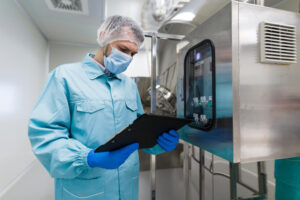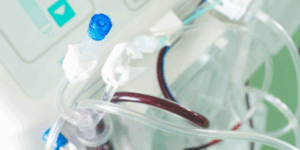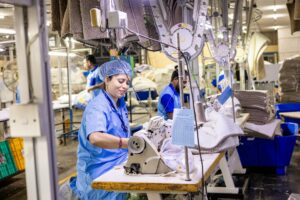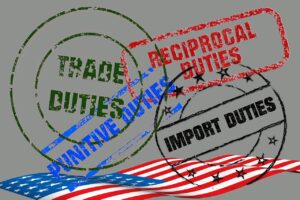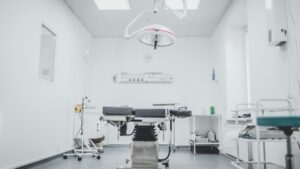FDA validation is mandatory for Class II medical equipment due to its moderate-to-high risk outline. This practice certifies compliance with regulations and the security of medical devices that directly impact patient health.
What Sets Class II Medical Devices Apart
The FDA institutes specific and strict requirements for these products due to their elevated risk profile. In contrast, Class I devices present minimal risk and require special controls in addition to the general ones.
This means that they do not always require premarket approval (PMA) like Class III devices. These require demonstrating equivalence with a marketed instrument and validating that the manufacturing processes guarantee its safety and efficacy.
This way, the increased scrutiny translates into the need for comprehensive documentation. Producers must generate and maintain detailed evidence covering everything from design and development to post-market production.
This process includes validation protocols, biocompatibility studies (ISO 10993), performance reports, and a robust quality management system certified to ISO 13485. Validation for these devices of equipment must be continuous and documented, ensuring that the product meets specifications.
The Role of Process Validation in Manufacturing Safety
Rigorous process approval forms the foundation for safe and reliable manufacturing. These certifications entail three indispensable pillars that support this objective:
- Installation Qualification (IQ). This confirms that the facilities, utilities (such as air and water), and installed equipment meet the design requirements and provide the appropriate environment for production.
- Operational Qualification (OQ). Demonstrates and documents that the equipment functions correctly across all ordinary parameter ranges, guaranteeing its functionality under realistic circumstances.
- Performance Qualification (PQ). This provides critical evidence that the process is operating under normal conditions with qualified equipment.
Thus, by meticulously implementing these steps, companies gain scientific assurance that their processes create safe and effective medical devices, batch after batch.
Regulatory Expectations for Class II Manufacturing
The development of this class of medical devices entails strict and well-defined regulatory expectations. In this case, agencies that enforce the ISO 13485 Class II standard require laborious documentation, inspection, and testing requirements.
This is due to the risk outline of these products, so considering and applying these demands is not optional:
- Documentation. Authorities require a fully documented Quality Management System (QMS) that demonstrates control over all aspects of design and manufacturing.
- Validation protocols and reports. Confirmation of every manufacturing procedure is crucial to the security and efficacy of the product. Hence, it requires pre-approved procedures that specify the entire method and comprehensive reports that record the outcomes.
- Design History File (DHF/DMF). Companies must create and maintain a Design History File (DHF) that documents the entire project history of the elements. Additionally, a Device Master Record (DMR) specifies the manufacture, testing, packaging, and labeling of each unit.
- Risk management (ISO 14971). Documentation must include a risk file that identifies hazards, estimates risks, evaluates them, and documents the control measures implemented.
Therefore, each of these measures ensures the safety of the medical product manufactured by the company for its specific use.
Preparing for Inspections and Audits
Businesses should operate under the premise that an FDA inspection or audit may occur at any time. Thus, manufacturers must contemplate transparency and openness of information, as these are the central elements. Hence, for correct preparation, the manufacturer must consider the following aspects:
- Real-time data access. Inspectors expect instant access to production records, inspection data, client complaint records, and Corrective and Preventive Actions (CAPA). As a result, a sturdy traceability scheme is essential.
- Internal and corrective audits. The corporation must conduct periodic internal reviews to validate the effectiveness of the QMS. The findings should result in well-documented CAPA plans, indicating a continuous improvement cycle.
- Compliance with ISO 13485. This certification is a baseline, and the international community is aware of this as a demonstration that the manufacturer has a robust and effective QMS.
Hence, this audit preparation is the best way to demonstrate that your facilities, procedures, and security measures guarantee a quality and functional product.
Specific and Rigorous Tests
The testing expectations for Class II devices are significantly higher than for Class I, spanning from design to lot release, as follows:
- Design validation. The producer must demonstrate that all products meet the user’s needs and are suitable for their intended use. Typically, this involves clinical studies or simulated usability testing, along with extensive analysis.
- Biocompatibility testing (ISO 10993). For any device that touches the patient, the company must do tests to assess toxicity and biological response to the materials used.
- Sterilization and packaging validation. If the instrument is sterile, validation of the entire process and barrier packaging is essential to ensure effective results throughout the product’s whole shelf life.
- Performance, functionality testing. Quality control testing of each production lot, conducted according to definite and approved procedures, helps ensure compliance with all performance and safety requirements.
These reviews, when conducted regularly and thoroughly, ensure regulatory compliance and maintain the quality standards of the production process.
Effects of Non-Compliance
Every company must fulfill FDA validation, so not getting up to the mark can bring about:
- Significant delays in review and approval of regulatory compliance (like 510(k)).
- Remarks in the form of an FDA Form 483.
- Recall orders.
- Monetary penalties and even a bar on product sales.
Official expectations for the manufacture of Class II devices, while complex, are also predictable. In this regard, they focus on documentary evidence that every aspect of design, production, and post-marketing is under control.
Adopting a proactive approach, with meticulous documentation, validated processes, and an integrated quality culture, is the path to comply to the regulatory norms. Likewise, they are the best strategy to ensure the safety of medical products and deliver safe and effective products to the market.
Common Pitfalls in Scaling Class II Production
One of the biggest mistakes when increasing the production of these items is obtaining procedure authorization incorrectly. Many companies mistakenly believe that a valid procedure for small batches will work just as well in large amounts without needing to be repeated. But this lack of planning causes:
- Main risks. These include variations in the results, deviations from major stipulations, and non-fulfillment of ISO 13485 Class II requirements.
- Regulatory impacts. Breaks in the validation agreement process, audit observations (Form 483), possible product recalls, and fines for not following rules.
- Key care points. In this situation, tool approval at a new level, extended method qualification, documented change control, and full batch traceability are needed.
A thorough review of all steps involved in manufacturing more is crucial for maintaining standards and ensuring the safety of medical equipment. Furthermore, this entire change involves updated certification protocols that prove process uniformity across the new production capacity.
How RexMed Supports Class II Compliance from Start to Finish
FDA validation remains a fundamental element for this class. Its rigorous implementation guarantees patient well-being and market access, representing an essential requirement for manufacturers.
RexMed integrates this validation into every phase, from design to production. Our Quality Management system, certified clean rooms and document traceability procedure ensure complete process control, guaranteeing ongoing regulatory compliance and the safety of each of our products.

